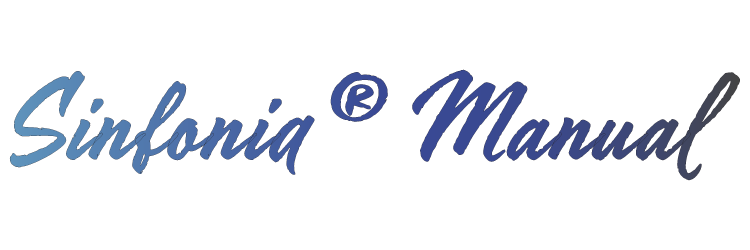Interface
Performance vs. Edit Mode
Sinfonia® has two basic modes: Performance and Edit. Just like you would expect, Performance Mode is for running the show during rehearsals and performances, and Edit Mode is for making changes to suit your specific production (adding cuts, removing songs, making key changes etc).
You can toggle between the modes in three ways:
-
Via Hotkeys: Mac (⌘+=) / Win (CTRL+=)
-
By using the "Mode" menu along the top of the screen. Mode-P means you are in Performance Mode, and Mode-E means you are in Edit Mode.

By toggling the lock icon in the upper right-hand corner of the screen. If it is locked, then you are in Performance Mode, if it is unlocked (and red) you are in Edit Mode.


Performance Mode
Edit Mode
Please note: while it is possible to play along in Edit Mode, we do not recommend running the show like this! Performance Mode prevents you from accidentally making changes during a show.


Timeline

The Timeline is one of the most important areas in Sinfonia® , especially during performance to keep an eye out for Navigational events, which inherently affect playback. That said, it also comes in handy when making large-scale edits.
Because there are many different types of edits that you can make within Sinfonia® , the Timeline let's you filter specific kinds of edits related to the currently "active" editing tab. For example, if you select the Instrument Mixer (either by clicking on it or by using the drop-down View Filter in the upper left-hand corner of Timeline), you will be able to see instrument edits like volume changes, mutes and panning.
Also, as Navigational events directly affect the flow of playback, we've added a Navigation Lane to the bottom of the Timeline, which gives you a bird's eye view of things like vamps, cuts, repeats, fermatas; basically any edit that you make with the Navigation tab.
Here are the types of edits visible, based on the current "active" tab. (for detailed information on what various edits do, see the following sections corresponding to the appropriate window.)
ACTIVE TAB
Comments
Hotkeys
Instrument Mixer
Reroutes
Keyboard
Miscellaneous
Cues
Navigation
Output Mixer
Songs
Tempo
EDITS VISIBLE
comment locations
hotkey locations
mutes, volume work, panning
reroute locations
active keyboard changes
any edits not covered by other settings
cue locations
cut/vamp/repeat/attaca/pause/stop/cutoff/relseq
mute settings, volume adjustments
transpotions
tempo adjustments and events (atempo, click, etc)
Please note, the Timeline window doesn't always tell you exactly what edit is made to a region! It merely tells you that there is an edit there. If you need detailed information on an edit, you should use the Inspector area on the far right-hand side of the screen. Some edits are color-coded, however. Check under the Preferences menu [(CMD + ,) on Mac and found under the Sinfonia menu or (CTRL + ,) on Windows and found under the Tools menu] to see what they are, or to change the colors.